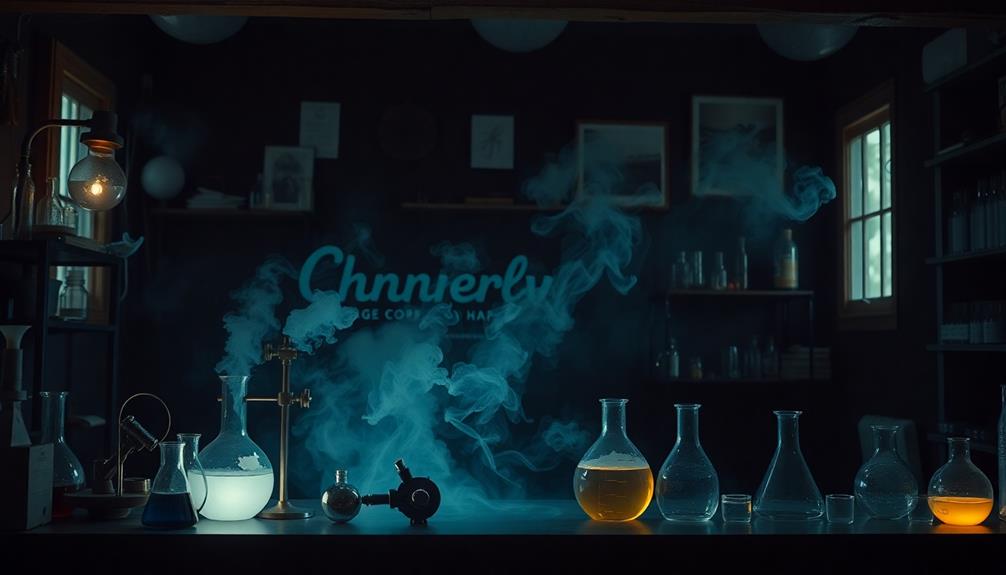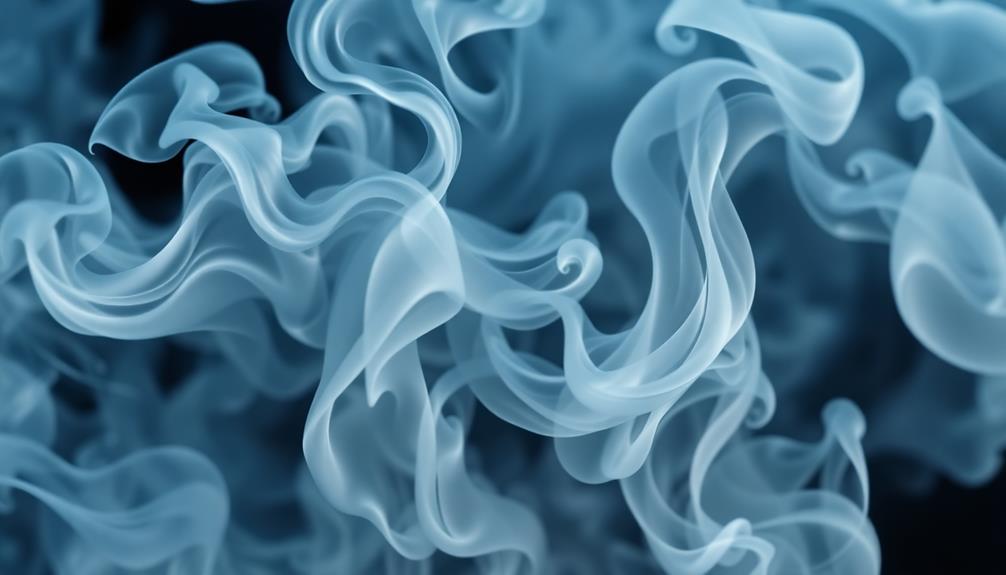Carbon monoxide (CO) is a sneaky gas because it doesn't smell like anything at all! It's colorless and tasteless, making it a silent threat in our homes. CO forms during incomplete combustion from things like gas stoves, vehicles, or heaters. Since it lacks any odor, you might not notice it until symptoms, like headaches or dizziness, appear. That's why it's crucial to have carbon monoxide detectors installed. These alarms can alert you to unsafe levels before it becomes dangerous. Stay safe, and you'll discover even more tips about keeping your home free from this hidden danger!
Key Takeaways
- Carbon monoxide (CO) is completely odorless, making it difficult to detect without proper equipment.
- Many people mistakenly believe CO has a smell, confusing it with hydrogen sulfide's rotten egg odor.
- CO is produced from incomplete combustion of fuels like gasoline, propane, and natural gas.
- The lack of odor increases the danger of unnoticed exposure and potential poisoning.
- Installing CO detectors is essential for early detection and safety in homes.
Introduction

Carbon monoxide (CO) is a silent threat that many people unknowingly face in their homes. This colorless, odorless gas can sneak in without any warning, making it an invisible danger. You might think you'd smell something if there were a problem, but CO doesn't have a smell at all! That's what makes it so tricky; you could be exposed and not even know it until it's too late.
Regular maintenance of your fuel-burning appliances is crucial to prevent CO buildup, much like how air purifier maintenance ensures clean air in your home. To keep your home safe, it's essential to install carbon monoxide detectors. These handy devices alert you when CO levels rise, giving you a chance to escape before poisoning occurs.
Remember, regular maintenance of your fuel-burning appliances is crucial. Whether it's your furnace, stove, or water heater, ensuring they're working properly helps prevent CO buildup. Also, good ventilation in your home is key. Opening windows or using exhaust fans can help keep air fresh and safe.
Staying informed about carbon monoxide can save lives, so take action today! Make sure your detectors are in working order and understand how to spot the signs. Your safety—and that of your loved ones—depends on it!
Description of the Smell

You might be surprised to learn that carbon monoxide (CO) has no smell at all. Unlike some gases, carbon monoxide is completely odorless, which makes it especially dangerous. This lack of odor means that individuals are often unaware of their exposure, highlighting the importance of maintaining high-quality content around safety protocols.
You can't detect CO in the air, so you may not even know you're being exposed until it's too late. This is a big reason why having carbon monoxide detectors in your home is so important.
Many people mistakenly think that CO smells like something unpleasant, like rotten eggs. But that odor actually comes from hydrogen sulfide, a different gas often added to natural gas as a warning sign.
CO is produced when fuels like gasoline, propane, and wood burn incompletely during combustion, yet it gives off no scent at all during this process.
Imagine walking into a room filled with this invisible gas and not realizing it's there! It's a frightening thought. That's why it's crucial to be proactive and install carbon monoxide detectors, ensuring your safety at home.
Source and Composition

The source of carbon monoxide (CO) primarily stems from the incomplete combustion of carbon-based fuels. You mightn't realize it, but common household items like gas appliances, heating systems, and even fireplaces can produce CO if they aren't maintained properly.
Unlike natural gas, which has that distinct rotten egg odor due to added chemicals, CO is colorless and odorless. This makes it particularly sneaky, as it can silently build up in your home without you knowing! Understanding the importance of budgeting for maintenance can help ensure that these appliances are serviced regularly to minimize risks.
When there's a leak, the air quality can quickly deteriorate, leading to carbon monoxide poisoning. This happens when CO binds with hemoglobin in your blood, reducing oxygen transport and putting your health at risk.
To keep your home safe, installing carbon monoxide detectors is crucial. These devices alert you to dangerous levels of CO, giving you time to react.
Always ensure your ventilation system is working well and that your appliances are properly vented. By staying aware of these sources and taking precautions, you can protect yourself and your loved ones from the dangers of carbon monoxide.
Typical Scenarios or Environments

In many homes, carbon monoxide can build up unnoticed, especially in typical scenarios where heating systems or appliances malfunction. For instance, if your gas stove or furnace has problems, it might cause carbon monoxide leaks without any signs of danger.
Unlike the smell of natural gas, which has that distinct rotten egg smell added for safety, carbon monoxide is colorless and odorless, making it particularly tricky to detect.
Imagine a cold winter evening when you're using your heating and air conditioning system. If a blocked chimney prevents exhaust from escaping, you could be at risk for CO exposure.
It's essential to be aware of signs of carbon monoxide, such as headaches, dizziness, or confusion, as they can mean you're in danger.
To protect your family, consider installing CO detectors in your home. These devices can help detect carbon monoxide before it becomes a serious threat.
Regularly check your appliances and ensure they're functioning well. Being proactive is your best defense against this silent menace, so you can enjoy your cozy home with peace of mind!
Emotional or Cultural Associations

Cultural perceptions often shape our understanding of safety, especially when it comes to detecting dangers like carbon monoxide (CO). Many people mistakenly believe there's a carbon monoxide smell, often associating it with the rotten egg odor of natural gas. This confusion can lead to complacency about carbon monoxide exposure, as you mightn't recognize CO's presence without a CO detector.
Without a detectable scent, CO silently accumulates, increasing risks in both domestic safety and public settings. When you encounter gas odors, your emotional responses, like fear or anxiety, prompt immediate action. However, this doesn't apply to CO, which can be far more dangerous due to its stealthy nature.
Cultural narratives about gas odors often overshadow the importance of proactive measures. Installing CO detectors is vital for preventing poisoning incidents, yet many overlook this crucial step.
Health or Safety Considerations

Understanding the risks of carbon monoxide (CO) is vital for maintaining health and safety. This colorless and odorless gas can sneak into your home without you even knowing it, making carbon monoxide detectors essential.
To protect your family, you should install these detectors throughout your home. They provide early warnings of CO presence, helping you prevent exposure and keep your home safe.
The health effects of carbon monoxide can be serious. You might experience symptoms of carbon monoxide poisoning like headaches, dizziness, or nausea. In severe cases, it can lead to loss of consciousness or even death, especially for vulnerable groups like young children and the elderly.
Knowing this, it's crucial to act quickly if you suspect CO in your home. Regularly check your detectors to ensure they're working properly. If you hear that alarm, evacuate immediately and seek fresh air.
Final Thoughts

As you wrap up your awareness journey about carbon monoxide, it's crucial to remember that this invisible threat poses real risks to your health and safety.
Carbon monoxide gas is colorless and odorless, making it challenging to detect without proper tools. That's why having carbon monoxide detectors placed throughout your home is essential. These devices can alert you to high levels of CO, helping protect your home and keep your family safe.
Regular HVAC service and routine maintenance of fuel-burning appliances are key to preventing leaks. When you ensure the proper placement of carbon monoxide detectors and stay on top of maintenance, you significantly reduce the effects of carbon monoxide poisoning.
If you ever suspect a problem or need help with your appliances, don't hesitate to call us. We're here to help you understand the risks and make your home a safer place.
Remember, awareness and action are your best defenses against carbon monoxide. By staying informed and proactive, you can enjoy peace of mind knowing your family is safe from this silent danger.
Frequently Asked Questions
Does Carbon Monoxide Have Any Smell?
Carbon monoxide doesn't have any smell, so you won't be able to detect it with your senses. It's crucial to install CO detectors in your home to alert you to dangerous levels of this gas.
How Can You Tell if There Is Carbon Monoxide in Your House?
To tell if there's carbon monoxide in your house, install CO detectors on every floor. Regularly check them, and if they activate, evacuate immediately and call emergency services for safety. Don't ignore symptoms like headaches or dizziness.
Is CO Harmful to Inhale?
Yes, inhaling carbon monoxide (CO) is harmful. It can cause headaches, dizziness, and confusion. If you suspect CO exposure, seek immediate medical attention to prevent serious health issues or even death. Don't risk your safety!
How Can You Tell if There Is Carbon Monoxide Without a Detector?
You can't reliably detect carbon monoxide without a detector. Stay alert for symptoms like headaches or dizziness, and ensure proper ventilation around combustion appliances. If you suspect CO exposure, evacuate immediately and seek help.









